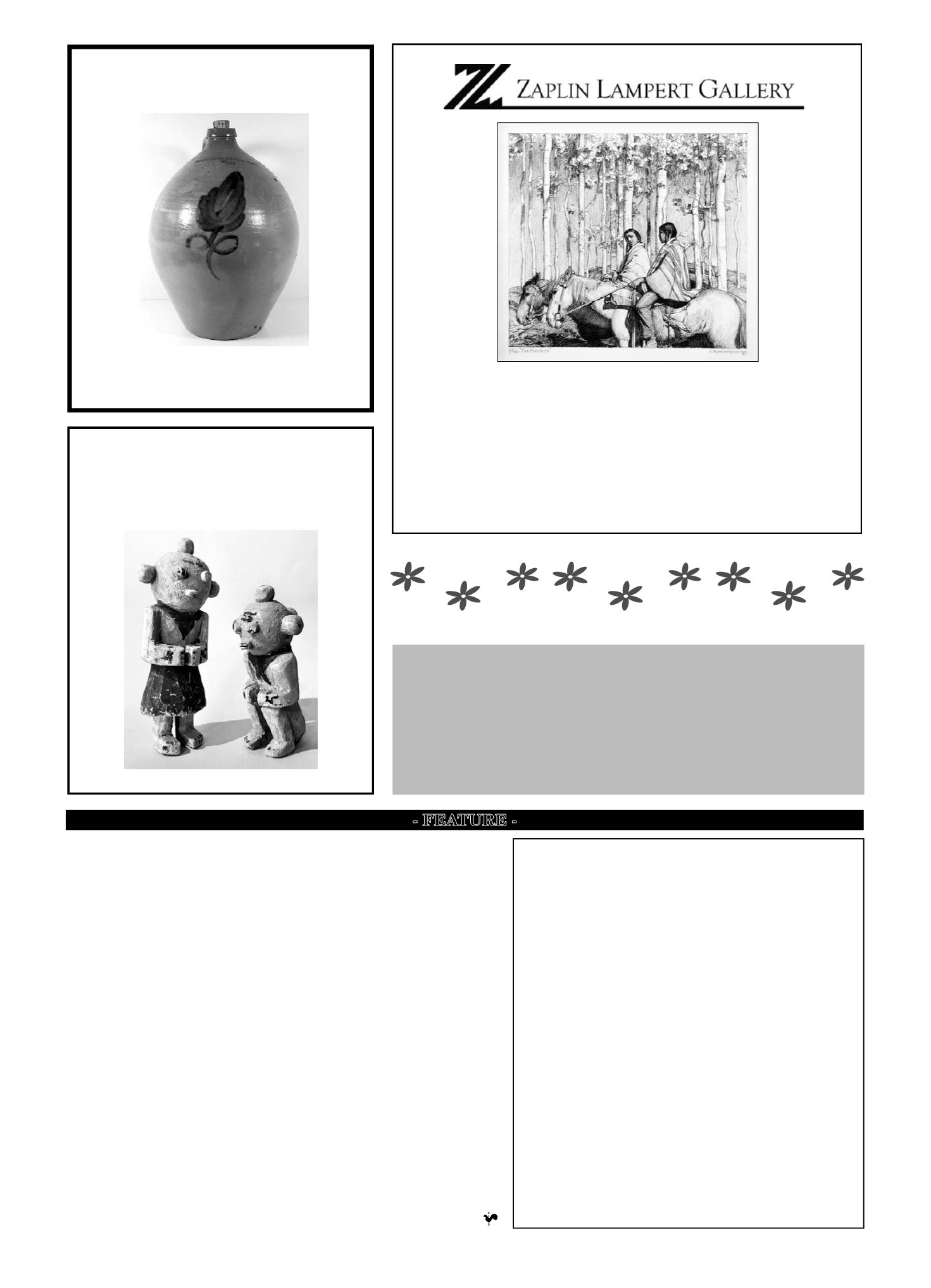

28-A Maine Antique Digest, April 2015
jewelry, which required examination and
confirmation. While the mummies and
ivory objects were ultimately released to the
museum, the museum community remains
concerned about the uncertainty and unpre-
dictability of the process, and the possible
risks to fragile and irreplaceable objects.
Musical Instruments
Musicians are also feeling the effects of the
new rule. Many musical instruments, particu-
larly antique musical instruments, contain ivory
elements. “Older guitars have ivory inlays, and
their strings rest on small bars of ivory on each
end. And with stringed instruments, it’s not the
instrument itself but the bow.”
9
As with museum
acquisitions of antique ivory objects, musi-
cians also are now prohibited from importing
any instruments purchased abroad that contain
African elephant ivory.
Musical instruments containing worked
African elephant ivory may be imported and
exported in noncommercial (non-sales) trans-
actions, but only if (i) the ivory was legally
acquired prior to February 26, 1976, (ii) the
ivory has not been transferred from one per-
son to another person in pursuit of financial
gain or profit after February 25, 2014, and (iii)
the item is accompanied by a CITES musical
instrument passport or CITES traveling exhi-
bition certificate, available in single-use or
multi-use varieties.
Documentation Is Critical
The new rule for African elephant ivory
reinforces the importance of full and proper
documentation for collectibles. All ivory-con-
taining objects, whether antique or not, must
be accompanied by (i) all necessary CITES
permits or certificates showing that the ivory
was (a) legally acquired prior to February 26,
1976, or (b) legally imported after Septem-
ber 22, 1982, through a designated antique
port; (ii) certified appraisals; (iii) bills of sale;
(iv) documentation of the place and date the
object was manufactured; and (v) documen-
tation identifying the species from which the
ivory was derived. Director’s Order No. 210,
Amendment 1, emphasizes that “[n]otarized
statements or affidavits by the exporter or
seller, or a CITES pre-convention certificate
alone, are not adequate proof that the article
meets the ESA exception.”
While a lack of documentation may render
objects unsalable, insufficient documentation
could also cause museums to be reluctant or
unable to accept charitable donations of such
objects. Even if a donation were accepted, the
object’s appraised value would be severely lim-
ited, since no legal U.S. market for undocumented
African elephant ivory exists. The donor’s con-
sternation could be compounded were the IRS’s
ArtAdvisory Panel to follow precedent and value
the object based on a market value on an illicit
market, resulting in an estate tax liability.
(This article first appeared in Greenberg
Traurig’s art law blog, Cultural Assets
[www.
gtlaw-culturalassets.com].
Reprinted
by
permission.)
Notes:
1. Import and export of Asian
elephant ivory is allowed for non-
commercial purposes either with
an Endangered Species Act (ESA)
permit or if the specimen qualifies
as pre-ESA or as an antique under
the ESA.
2. Gil Aegerter, “Saving the
Elephants? State Bans on Ivory
Trade Gather Steam,” NBC News,
August 12, 2014 (www.nbcnews.
com/science/environment/saving- elephants-state-bans-ivory-trade- gather-steam-n179121).3. Jonathan Jones, “Ivory: the
elephant in the art gallery,” the
Guardian , May 15, 2014 (www. theguardian.com/artanddesign/jon athanjonesblog/2014/may/15/ivo ry-elephant-artworks-banned-cul tural-legacy).4. Ben Phelan, “An Overview
of Current Ivory Law,”
Antiques
Roadshow
Web site, August 11,
2014 (www.pbs.org/wgbh/road show/fts/chattanooga_200804A10. html).5. Most European countries, by
contrast, exempted such objects
that were only 50 years old.
6. U.S. Fish & Wildlife Service
Web site, “Ivory Ban Q&As,”
(www.fws.gov/international/trav el-and-trade/ivory-ban-questions- and-answers.html).7. Asian elephant ivory sold in
interstate commerce within the
United States must meet the crite-
ria of the antique exception.
8. Stephanie Hornbeck, “Ivory:
Identification and Regulation of a
Precious Material,” Smithsonian
National Museum of African Art
Conservation Lab Web site (www. caryatid-conservation.com/Docu ments/ivory identification and reg ulation.pdf).9. Adam Ragusea, “Musicians,
Take Note: Your Instrument
May Be Contraband,”
All Things
Considered
,
National
Public
Radio, April 7, 2014 (www.npr.
org/2014/04/07/300267040/mus icians-take-note-your-instrument- may-be-contraband).- FEATURE -
Rare 4-Gallon Ovoid Jug with a Large Cobalt Blue Floral
Decoration by Orcutt. Humiston & Co., Troy, New York,
circa 1828-1829.
Raven’s Way Antiques
Visit us at
www.ravenswayantiques.com1834 Pennsylvania German Fraktur.
P.O. Box 1477, N. Kingstown, RI 02852
rwantique@aol.comJOHN C. HILL
ANTIQUE INDIAN ART
Look for my ad in color at
www.maineantiquedigest.com www.johnhillgallery.come-mail:
antqindart@aol.com6962 E. 1st Ave.,
Scottsdale, Arizona
(480) 946-2910
Pair of Koyemsi, Ca. 1940.
Find the perfect ........
www.MarketplaceForCollectors.comActively buying and selling historical paintings by
Classic Artists of the American West, Taos and Santa Fe
651 Canyon Road, Santa Fe, New Mexico 87501
505.982.6100 •
gallery@zaplinlampert.com www.zaplinlampert.comE. Martin Hennings (1886-1956)
The Hunters
Lithograph, 9 x 10 inches
#64 of 100










